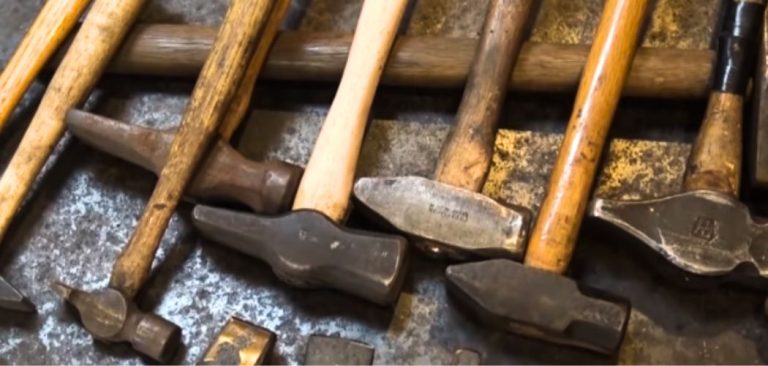How Are Wire Brushes Made
Wire brushes are versatile tools widely used for cleaning, rust removal, surface preparation, and various other applications. But have you ever wondered how these essential tools are made? In this article, I will focus on How wire brushes are made and the steps involved in making these handy tools. So let’s know some unknown facts about them.

How Are Wire Brushes Made
I will discuss below the steps involved in making Wire Brushes, starting from the material selection to its finishing look and delivering it to the final consumer. Let’s begin to tell you about how Wire Brushes are Made.
Material Selection
The first step in the wire brush manufacturing process involves carefully selecting the appropriate materials. Wire brush bristles are typically made from various metals, such as carbon steel, stainless steel, or brass, depending on the brush’s intended use and desired properties.
It is crucial to choose high-quality wire to ensure the brush’s durability and effective cleaning ability.
Wire Drawing
After selecting the suitable wire material, the manufacturing process proceeds with a wire drawing. The wire is drawn through multiple dies, progressively reducing its diameter to achieve the desired size. This drawing process is repeated several times until the wire reaches the required thickness and consistency.
Cutting and Trimming
Once the wire is drawn, it is cut to the appropriate length, depending on the size and configuration of the brush. Precision-cutting machines are employed to ensure accurate and consistent measurements. Any excess wires or protruding ends are trimmed to guarantee uniformity and safety.

Bristle Formation
The next crucial step involves forming the bristles, which are the defining characteristics of wire brushes. Cut lengths of wire are fed into specialized machines that expertly twist and secure the wire to create the brush bristles.
Depending on the brush’s design, this process involves twisting the wire around a central core or securing it with a ferrule.
Attachment to Brush Body
With the bristles formed, they are securely attached to the brush’s body. The brush body can be crafted from materials, such as wood, plastic, or metal, depending on the intended use and durability requirements. Various methods, including stapling, welding, or epoxy glue, firmly anchor the bristles to the brush body.
Trimming and Shaping
Once the bristles are securely attached, the wire brush undergoes trimming and shaping to achieve the desired brush profile. Any excess bristle length is shortened, and the brush body can be contoured or shaped to optimize functionality and ergonomics.
Quality Control
Before wire brushes are ready for packaging and distribution, they undergo a rigorous quality control process. Each brush is carefully inspected for defects, such as loose bristles or irregularities in size or shape. This meticulous quality control ensures that only brushes meeting the highest standards are released to the market.
What additional considerations should be taken into account when making a wire brush?
When manufacturing wire brushes, in addition to the previously mentioned steps and factors, companies should take them into account to ensure the final product’s quality, safety, and performance. Here are some additional aspects to consider:
- Secure attachment, ergonomic handling, and optimal bristle arrangement ensure user safety and efficient performance.
- Selecting wear-resistant and corrosion-resistant materials prolongs brush life, even in demanding environments.
- Choosing recyclable materials and considering the overall environmental footprint of brushes contributes to sustainable manufacturing practices.
- Brush design for easy debris removal maintains its performance over time, reducing maintenance effort.
- Meeting industry regulations and standards ensures brush safety, quality, and compliance with guidelines.
- Providing well-labeled packaging and clear usage guidelines helps users get the most out of the brush while staying safe.
- Comprehensive instructions for proper use, care, and maintenance ensure optimum performance and longevity.
- It offers a wide range of brush types and sizes that caters to different needs and applications, enhancing user options.
- Regularly testing prototypes and batches for manufacturing defects maintains high-quality standards, delivering reliable products.
Addressing these considerations collectively ensures the creation of wire brushes that excel in performance, safety, and overall utility.
FAQ
What type of handle is chosen for making wire brushes?
The type of handle chosen to make a wire brush depends on the intended use, user comfort, and materials. Wooden handles offer a traditional grip and can be contoured for ergonomics but may not be suitable for all environments.

Plastic handles are light, durable, and often ergonomically shaped. Rubber-coated handles reduce vibration and increase grip, which is ideal for heavy use.
Metal handles offer durability in industrial settings. Composite handles blend materials for a balance of comfort and durability. The ergonomically shaped handle fits the contours of the hand. The material and design of the handle should align with the brush’s purpose, user needs, and environment to ensure optimal usability.
Can wire brushes be customized for specific applications?
Yes, manufacturers can make customized wire brushes for specific applications or industries. These brushes can be tailored in size, shape, bristle material, and design to meet particular needs.
Conclusion
Wire brushes are important in industry and homes, providing effective cleaning and surface preparation solutions. Highlight the craftsmanship inside by uncovering their manufacturing process. From material selection to construction and quality control, each step shapes a premium wire brush that meets diverse needs and performs excellently.
Share different opinions and request promotion below. Your inspiration inspires me to produce superior articles in the future.
You may read also – Types Of Hammer Handle






